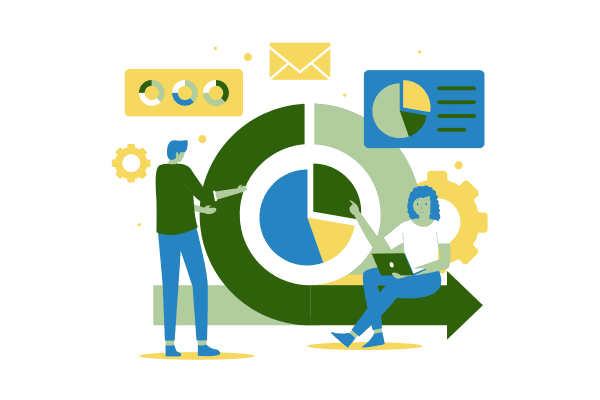By Dan Rabinovitz, Senior Sales Engineer Digital.ai
Value-based delivery is a customer-centric approach to planning, building, and delivering software to end users. In this way, it’s intrinsically tied to Agile software development practices, especially when considering scaled agile frameworks, like the Scaled Agile Framework (SAFe), where work is aligned with value streams.
As we all know, customers can be fickle. Look at how fast trends come and go in the current social media era. How do we define value? How do we ensure that whatever we build will actually deliver that value? This blog post will explore value-based delivery and how to best align your development organization to deliver value when your customers need and expect it most.
What is Value-Based Delivery?
Let’s start with a better definition. Value-based delivery is an approach to software development that prioritizes value to the customer. The focus is on delivering software that meets the needs and expectations of a customer.
Take the iPhone for example. When Steve Jobs introduced the iPhone back in 2007, customers were expecting a cross between a phone and a music player. What Steve Jobs thought they needed was much more than that, and he delivered not only a mash-up of a music player and phone, but he also included a camera, a web browser, an email app, a note-taking app, a calculator, and many other capabilities that allowed consumers to shed other devices they were carrying at the time. In this way, he delivered true value when it mattered most and created a consumer frenzy that still exists today. Each iteration of the iPhone, while incremental, has delivered value in the same way.
How to Deliver Value Across the SDLC – It Starts with Your Customers’ Needs
Ok, that’s a hardware example, but now let’s talk software and see how value-based delivery is closely aligned to enterprise Agile principles.
- Per our definition above, value-based delivery is customer-centric. One of the key principles of Agile software development is to keep the SDLC process customer-focused. Enterprise Agile prioritizes customer collaboration and responding to customers’ changing needs, so in our value-based delivery model, we should always keep in mind “What would the customer want and need?” and if we’re not sure, we need to collaborate with them and build their feedback and requirements into our plans.
- By aligning work and teams to value streams in an enterprise Agile environment, our teams, including developers and testers, prioritize and focus on customer requirements to create incremental value-added work as they plan and execute through their sprints or program increments. Each sprint planning session needs to pull backlog stories in the proper order to both deliver working software and continuous collaboration to ensure they are customer obsessed.
- Agile, by its nature is an iterative, flexible development process. As you go through a sprint review, your objective is to demonstrate some piece of work story that is aligned to a feature. How does that piece of work story contribute to the overall value of that feature and how does it make it good for your customers? If you can’t articulate the answers to those two questions, you need to go back and inspect, adapt, and plan with value as your top of mind in the next sprint.
Creating an Agile Workflow with Continuous Feedback
Incorporating customer feedback is a cycle, and many graphics that illustrate an Agile workflow: it is core to Agile. Creating an Agile workflow helps to ensure customer centricity (and value) is center stage at every phase of the SDLC.
The same process applies in a scaled agile environment, though a little differently and with more forethought. As you scale Agile for enterprise value delivery, teams will be working in longer increments, typically 10-12 weeks. There are more layers of guidance, with release train engineers or project managers working with teams of product owners to plot out work over a longer time horizon.
Teams will continue to assess quality with customer value top of mind as work moves into CI/CD, but since we already have high confidence that our work has quality and value built in, the rest of the process will move at lightning speed. Builds can happen automatically on code check-in or according to a schedule, and releases can be controlled to maximize value delivery for when the customer needs or wants it most (or timed around a new product launch or other marketing events).
How Value-Based Delivery Benefits the Enterprise
We’ve discussed value-based delivery in terms of customer considerations, but how does it benefit your enterprise? There are many benefits your enterprise will enjoy, but I’ll touch on two that can be critical to your enterprise:
- There are budgetary implications when adopting a scaled Agile approach and practicing lean portfolio management. Lean Portfolio Management is a broad topic that can be its own blog post, but it’s relevant here because we are consistently making investments in software that always delivers value to the customer. In short, this minimizes waste in the system and therefore helps to maintain proper investment levels vs plan. Delays and overspending are greatly reduced.
- Objectives and key results (OKRs) are a newer management technique to ensure the enterprise is meeting strategic milestones. Milestones are defined by the business and can come in the form of increased sales, customer satisfaction, or other measures that tell us how well we’re doing to keep our customers happy and loyal enough to purchase more from us as their preferred vendor. In a well-performing Agile enterprise, we become truly value-based and much more likely to achieve internal business OKRs because we’re building and delivering software with a customer-centric mindset.
Learn More About Scaled Agile and Value-Based Delivery
Much of what has been discussed is echoed in the 16th State Of Agile report. According to this report, an overwhelming number of Agile teams have practices that align with value-based delivery. Moreover, survey respondents also stated their main reason for adopting scaled Agile practices is to accelerate time to market while also delivering value to the customer and meeting business objectives. We encourage you to review the rest of the report to learn more, but it’s these key takeaways that demonstrate how enterprises, and more specifically our Digital.ai Agility customers, are already ahead of the curve for the next level of business transformation.
How to Get Started or Accelerate Your Value-Based Delivery Journey
It’s clear that value-based delivery benefits both your customers and your enterprise, making it a win-win for everyone. But if your enterprise is just starting this journey or struggling to advance, you should check out our recent presentation that will help you to get moving or reach out to schedule a call.
Are you ready to scale your enterprise?
Explore
What's New In The World of Digital.ai
Happy 4th Anniversary Digital.ai!
Join us in celebrating 4 years of Digital.ai’s journey in DevSecOps, empowering enterprises with AI-driven software delivery.
Comprehensive Guide to Mastering Agile Workflows
Discover the importance of agile workflow management for project success. Learn how Digital.ai’s AI-powered solutions streamline processes & drive innovation.
Happy 3rd Anniversary Digital.ai!
This year on June 16th, Digital.ai is turning three! Continue reading for insight into Digital.ai’s journey and what plans we have for the future.



